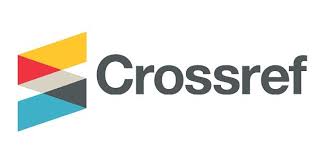IJCRR - 13(4), February, 2021
Pages: 91-96
A Comprehensive Analysis on the Efficient Mechanisms to Detect Obstructive Sleep Apnea Using AI and Heuristic Algorithms
Author: Jayit Saha, Ishita Dasgupta, G. Malathi, Rajkumar Murugesan
Category: Healthcare
[Download PDF]
Abstract:
Obstructive sleep apnea is a common problem arising in adults and children nowadays, determined by abnormalities in breathing gaps or incapability of air intake capacity during sleeping results in a decrease in oxygen level in blood. The brain detects this sudden decrease in the level of oxygen and sends a signal to wake the person up. Studies revealed the breathing stops for almost 10 seconds during a sleep apnea episode. There is no restriction on who can develop Obstructive Sleep Apnea(OSA), it can affect adults as well as infants. Our research primarily aims at assessing the various recent developments and studies made as a solution to this alarming problem. Their methodology and techniques have been studied and accuracy and sensitivity rates compared. A comprehensive and detailed study has been conducted on several research papers and studies done in the field of predicting sleep apnea. Sleep Apnea and classification of apneic signals have been mentioned in our study. The related researches have been studied extensively and compiled in our research work. The various techniques used by the researchers have been studied and tabulated along with the algorithm accuracies. It is observed that signal measurement along with AI algorithms has made significant advancements in OSA prediction. It is observed that Self Developed Algorithm on VAD showed the highest accuracy of 97%. PPG signal analysis and binary classification algorithm showed good accuracies of 86.67% and 86% respectively. AdaBoost, Decision Table and Bagging REPTree and SVM classifier also showed good accuracy of around 83% in the detection of Sleep Apnea episodes. The study highlighted the research works done to combat the rising problem of Obstructive Sleep Apnea. This comprehensive study of existing methods will help researchers to identify their drawbacks and find out more efficient solutions to them, which will help the humanity less prone to risks due to this alarming issue of sleep apnea.
Keywords: Obstructive Sleep Apnea, Polysomnography(PSG), FFT(Fast Fourier Transform), Sleep Apnea-Hypopnea Syndrome(SAHS), Frequency Modulated Continuous Wave(FMCW), piezoelectric, Heart Rate Variability(HRV), photoplethysmography (PPG)
Citation:
Jayit Saha, Ishita Dasgupta, G. Malathi, Rajkumar Murugesan. A Comprehensive Analysis on the Efficient Mechanisms to Detect Obstructive Sleep Apnea Using AI and Heuristic Algorithms International Journal of Current Research and Review. 13(4), February, 91-96
References:
1. Jin Zhang, Q. Zhang, Y. Wang, C. Qui. A Real-time auto-adjustable smart pillow system for sleep apnea detection and treatment. 12th International Conference on Information Processing in Sensor Networks (IPSN).8–11 April 2013;179–190.
2. Young T, Palta M, Dempsey J, Skatrud J, Weber S, Badr S. The Occurrence of Sleep-Disordered Breathing among Middle-Aged Adults. New Engl J Med 1993;328(17):1230-1235.
3. Al-Angari H, Sahakian A. Automated Recognition of Obstructive Sleep Apnea Syndrome Using Support Vector Machine Classifier. Transac Infor Tech Biomed 2012;16(3):463-468.
4. Almazaydeh L, Elleithy K, Faezipour M, Abushakra A. Apnea Detection based on Respiratory Signal Classification. Procedia Comp Sci 2013;21:310-316.
5. Nandakumar R, Gollakota S, Watson N. Contactless Sleep Apnea Detection on Smartphones. GetMobile: Mobile Comp Commu 2015;19(3):22-24.
6. Varady P, Bongar S, Benyo Z. Detection of airway obstructions and sleep apnea by analyzing the phase relation of respiration movement signals. Transac Instru Measur 2003;52(1):2-6.
7. Derong Liu, Zhongyu Pang, Lloyd S. A Neural Network Method for Detection of Obstructive Sleep Apnea and Narcolepsy Based on Pupil Size and EEG. Transac Neural Netw 2008;19(2):308-318.
8. Xie B, Hlaing Minn. Real-Time Sleep Apnea Detection by Classifier Combination. IEEE Transac Infor Tech Biomed 2012;16(3):469-477.
9. Lazaro J, Gil E, Vergara J, Laguna P. Pulse Rate Variability Analysis for Discrimination of Sleep-Apnea-Related Decreases in the Amplitude Fluctuations of Pulse Photoplethysmographic Signal in Children. J Biomed Health Infor 2014;18(1):240-246.
10. Patwari N, Wilson J, Ananthanarayanan S, Kasera S, Westenskow D. Monitoring Breathing via Signal Strength in Wireless Networks. Transac Mobile Comp 2014;13(8):1774-1786.
11. Rahman T, Adams A, Zhang M, Cherry E, Choudhury T. BodyBeat. GetMobile: Mobile Comp Commu 2015;19(1):14-17.
12. Sheikh Shanawaz Mostafa, Fernando Morgado-Dias, Antonio G. Ravelo-García Comparison of SFS and mRMR for oximetry feature selection in obstructive sleep apnea detection. Neural Comp Appl 2018:1–21.
13. 7. Bharathy G, Prasana J, Muthu S. Molecular Conformational Analysis, Vibrational Spectra, NBO, HOMO–LUMO and Molecular docking of Modafinil Based on Density Functional Theory. Int J Curr Res Rev 2018;10(21):36-45.
14. Almazaydeh L, Faezipour M, Elleithy K. A Neural Network System for Detection of Obstructive Sleep Apnea Through SpO2 Signal Features. Int J Adv Comp Sci Appl 2012;3(5).
15. Choi S, Yoon H, Kim H, Kim H, Kwon H, Oh S, et al. Real-time apnea-hypopnea event detection during sleep by convolutional neural networks. Comp Bio Med 2018;100:123-131.
16. Biswal S, Sun H, Goparaju B, Westover M, Sun J, Bianchi M. Expert-level sleep scoring with deep neural networks. J Am Med Infor Asso 2018;25(12):1643-1650.
17. Khandoker A, Palaniswami M, Karmakar C. Support Vector Machines for Automated Recognition of Obstructive Sleep Apnea Syndrome From ECG Recordings. Transac Infor Tech Biomed 2009;13(1):37-48.
18. Sannino G, De Falco I, De Pietro G. An Automatic Rules Extraction Approach to Support OSA Events Detection in an mHealth System. J Biomed Health Infor 2014;18(5):1518-1524.
19. Khandoker A, Gubbi J, Palaniswami M. Automated Scoring of Obstructive Sleep Apnea and Hypopnea Events Using Short-Term Electrocardiogram Recordings. Transac Infor Tech Biomed 2009;13(6):1057-1067.
|






 This work is licensed under a Creative Commons Attribution-NonCommercial 4.0 International License
This work is licensed under a Creative Commons Attribution-NonCommercial 4.0 International License